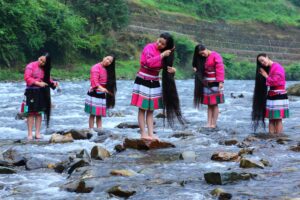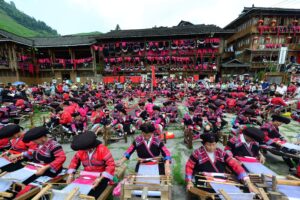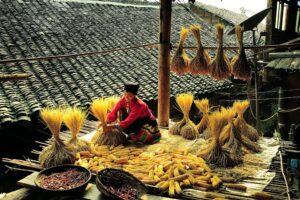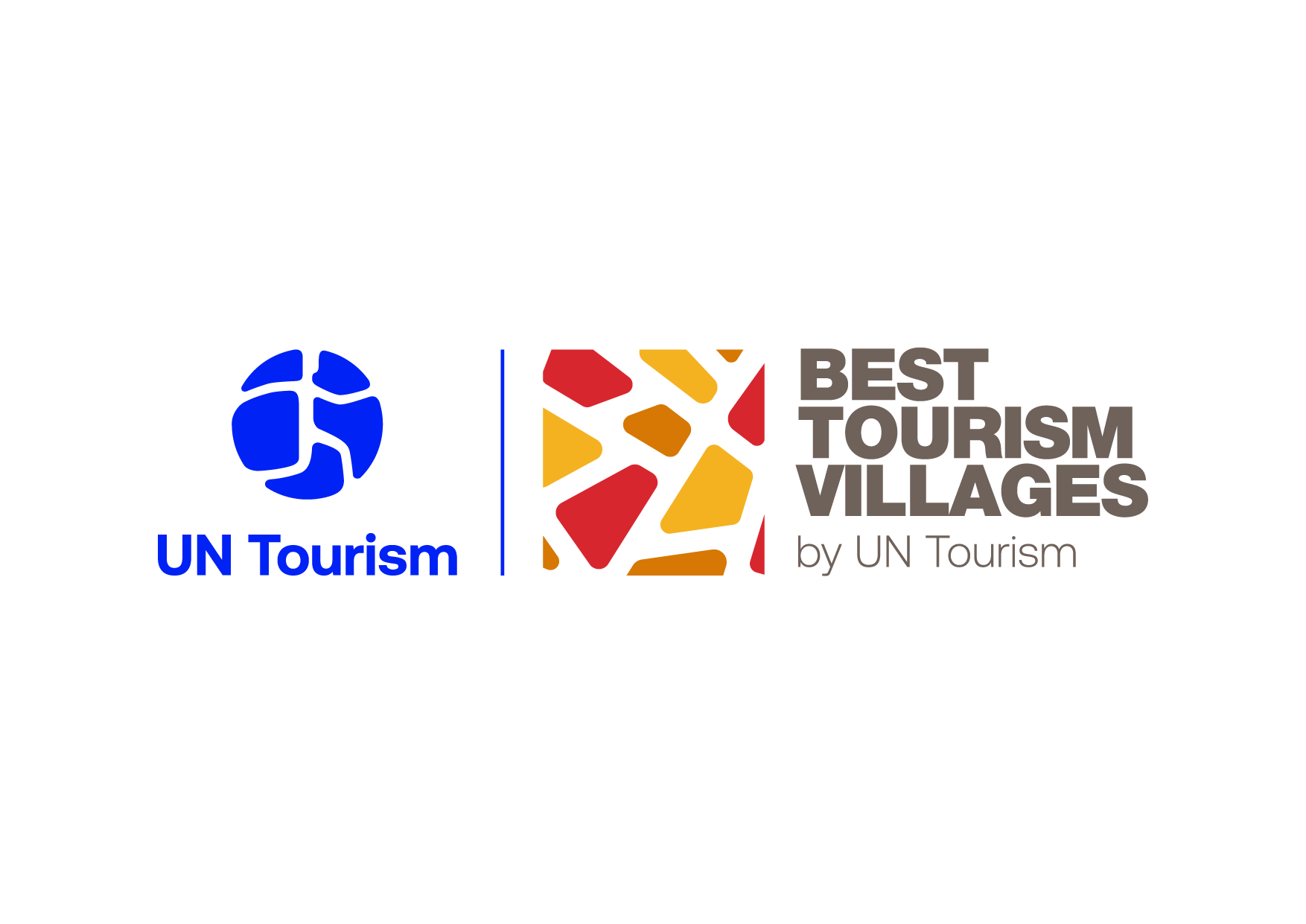A village amongst the terraces
Dazhai village has a history which dates back more than 2,300 years. Located in the high and cold mountainous area in northern Guangxi, with sublime mountains, streams, and a forest coverage of 75.6%, it has rich tourism resources, in particular the Longji Terraces, the “Globally Important Agricultural Cultural Heritage” System. It integrates the development of “agriculture and tourism” to promote the protection of terrace cultural heritage and agricultural production by providing cable-car sightseeing of terraces, traditional farming, wetland science education, research, and other experience programs.
The agricultural heritage of Dazhai terraces is representative of the thousand-year farming culture of ethnic groups. It adopts the most traditional agricultural production methods, which attracts many tourists every year to watch and experience farming cultural activities such as ploughing, harvesting and rice drying.
The village works to improve the tourism quality by adhering to the culture-based and technology-promoted green-tourism idea. A variety of Red Yao ethnic cultural experience activities are provided, such as wooden building accommodation and Red Yao embroidery dances to name but some. The village is also promoting festivals such as the “Sun Clothes Festival”.
HIGHLIGHTS
-

Safeguarding cultural heritage
The villagers are working to build an eco-friendly tourism experience that focuses on the protection of rice terrace cultural heritage and agricultural production, provides cable-car experiences to view the terraces, offers informative sessions on traditional farming and wetland science, and a range of other research programs.
-

Green tourism
The village has improved its tourism standards by adhering to green tourism. It offers a variety of Red Yao ethnic cultural experiences such as wooden building accommodation and Red Yao embroidery dances.
-

Terrace farming as tourism product
The village has reclaimed barren hillsides and has converted them into terraced farmland. Since the 1990s, the village’s new journey towards developing ecological tourism has diversified their sources of income and brought about an increase in welfare to the lives of the local people.

